Don't "like" me because I'm sober in
AA. And stop outing me with your clicks. Follow these five steps
toward social-networking propriety.
When you update your Facebook status to announce that you
have another year’s sobriety, you accomplish two things. First, you
break the
11th Tradition.
Second, all of our mutual friends in the program rush to "like" and
congratulate you, like moths studding the burning glass of a halogen
lamp. Well, not me. Sorry, but I’m not putting my full name next to the
phrase "sober." Facebook is porous. Everyone is on Facebook. If my boss
is one of our mutual friends and I congratulate you on your sobriety,
she may well make the leap of logic to assume that I’m "one of those AA
people." And that’s none of her business.
Your alcoholism and your
recovery should not be public property. When you announce your
affiliation with AA online, that’s what it becomes. Thanks to a
vast erosion
in privacy laws, everything you say and do on Facebook is trapped in
amber for perpetuity. Don’t make your AA chip your profile picture
(argh)! Don’t announce that you just finished your Fourth Step. What
happened to the good old days (okay, now I am officially a
bleeding deacon)
when we belonged to a virtual secret society that met behind closed
doors and didn’t trumpet the fact that we are recovering from a deadly,
highly stigmatized disease?
Okay, so you want to tell the world that you’re in AA. Fine, have at it. Re-read Traditions Eleven and Twelve and
make up your own mind. But leave me—and other AA members—out of it. Review and avoid the following Facebook Crimes:
1. Outing other members blatantly
Please
don’t tag me in posts about how great a meeting was or how much you
“love your sober life.” Tag me in reference to how awesome your life in
general is, by all means, but don’t put my name next to references about
recovery.
2. Outing other members cryptically
If
you come to me with a question and I suggest a page number in the Big
Book to read, don’t post on my page, "Oh my God, page 69!!! You were so
right!" It has my non-AA friends scratching their heads (I have close
friends who I’ve never told I’m in AA) and some fellow AA members pawing
frantically at their Big Books trying to get the inside scoop on what
exactly you’re referring to. By the way, referencing page 69 ("we all
have sex problems") in public is just as icky as posting that you’re
"really enjoying"
50 Shades of Grey. Ew.
Recovery groups should be focused on recovery, not your meltdown of the week.
3. Drama, drama, drama
This
tends to be a big problem in "secret" groups that are invitation-only
for those in recovery. As in AA, there’s a heady mix of personalities in
any online recovery community. Some of us are well, and some of us are,
well, not so well. We’re all willing to cut you a little slack when you
go on and on at your home group about how a barely disguised "him" (aka
another newcomer sitting across the room from you) broke your heart and
set your dog on fire, but when you put this info out on Facebook you’re
both preserving your drama in binary code forever and issuing a virtual
call to arms. In meetings you have the bylaws restricting crosstalk to
help save yourself from yourself, hopefully ensuring that nobody
exacerbates the drama by responding to what you say. Nor (in a perfect
world) will they take your information outside the rooms to anyone but
their sponsor. No such practice of "principles over personalities" can
be guaranteed online, where I’ve seen members of recovery groups pick
sides and greedily ask for more information. Recovery groups should be
focused on recovery, not your meltdown of the week. Behavior that might
be tolerated in other online groups—such as
trolling/whining/shit-stirring—will get you kicked out of these "secret"
groups a lot quicker than bad behavior will get you
kicked out of a real meeting. Just go to a meeting. Go.
4. More drama
"Fuck
all of y’all, I’m out of here!" Believe it or not, we want you to stay.
We really do want you to stay in Alcoholics Anonymous, to find a little
peace and to get sober. We know it’s not easy. And we know it’s a
challenge to break a lot of those old habits, including the habit of
flying off the handle and relapsing when you don’t get your way. And we
know that anger can kill. When you update your status with something
like—"Fuck everyone for siding with my ex! AA is nothing but snitches
and bitches!"—we know it’s really tantamount to a suicide threat. And,
like responding to a suicide threat, we will all try and convince you to
stay. But we shouldn’t be doing that on Facebook. We should be calling
you, stopping by your house and trying to take you to a meeting.
Twelve-step calls should not be done on social media. That’s just lazy.
5. Photos
"Oh
my God, wasn’t ACYPAA amazing? Do you remember the dance contest? How
Rick dressed up like Flava Flav except instead of a huge clock around
his neck he had a big AA chip? That was hilarious!" Wait, why is that
picture on Facebook? Even if it is just in a "secret" group, did you get
Rick’s permission to take and post his picture? What about all of the
people in the background? I really doubt you asked all 40 people dancing
next to Rick whether or not you could take their picture and put it
online, blatantly outing them as "young and sober." Some of them might
be doctors or lawyers or teachers whose careers could be jeopardized.
Also, if one of our members should relapse and then post pictures of
themselves with a margarita in hand, don’t embarrass them with alarmed
statements about how you hope they’ll come back soon. Either they will
or they won’t. Their relapse is none of your business until they call
you.
I understand the temptation to weave your life on social
media and your life in recovery together. Recovery is amazing. It’s
natural to want to share it with everyone, to get involved and to
normalize it as much as possible by broadcasting how whoop-ass your
fellowship is. But it’s not just your life you’re talking about. AA is a
"we" program.
Recent GSO guidelines
addressing this topic suggest that people do not identify themselves as
members of AA on any social networking sites. That’s for everyone’s
safety. Just go on and have an awesome life. I and our fellow AA members
will keep clicking "like" on your snowboarding pictures or posts about
how happy you are, complicit with secret smiles about how that happiness
came to fruition.
Oh, and one more thing. Potential
13th-steppers:
Stop profile-stalking newcomers. Newcomers, stop accepting friendship
requests from sleazy 13th-steppers. Leave that shit for the meeting
after the meeting, where I can steer you away from Don Juan and refer
you to page
69.
Bobbi Anderson is a pseudonym for a regular contributor to The Fix
.
Here's a numbered list of reasons why it would be a bad idea.
You're not cut out for this.
Shutterstock
Hey homeslice, I was there. Three months of shaky sobriety
under my belt and ready to save the world, a community college catalog
in front of me. I knew more about drugs and alcohol and addiction and
recovery and life skills then than I do now with six years clean. The
counselors who walked me through rehab still exist in my memory as
larger-than-life angels with bright hazy halos of light behind them. You
know I looked up to them. But I probably shouldn’t have gone on to be
an AOD counselor. And you probably shouldn’t either. Why? I’ll tell you
why.
1. You’re probably not ready.
Recovery is
lot of hard work that you need to invest in yourself before you try to
save somebody else. Many counseling programs don’t allow students in
without a good chunk of documented sobriety, ranging from six months to
two years. Ginger Olsen, a professor and veteran counselor, teaches in
California where there is no such waiting period. She says that most of
her students are “two steppers: one, they decide they’ve seen the light,
and, two, they’re going to save the world. Very few make it all the way
through.”
Take heart though, Olsen says that even the dropouts usually get something out of it.
“Whether
it is the intervening 10 steps or cognitive awareness or a combination,
they grow in their sobriety and become productive citizens moving on to
more satisfying endeavors.”
2. School is hard.
There are a few totally legit reasons why it’s a good idea to wait a
year or so after your clean date before deciding on your life’s work.
One of them is
Post Acute Withdrawal Syndrome,
a set of symptoms including anxiety, depression and cravings which
persist months into early recovery. The most common phenomenon I saw in
myself, my clients and my fellow students was a desire to do everything
right away in an effort to make up for lost time. Five months ago we
were lying in a gutter trying to figure out who to hit up for enough
cash to make another score. Now we’re sober and bright-eyed and we need
to get a job and reconnect with our family and find a girlfriend and
start going to the gym again and go to school and.... It’s a lot to
handle. You shouldn’t take it all on at once, because you’re going to
burn out and you could relapse. I should have. Sixty hour work weeks
plus being a full-time student plus every service commitment that came
my way? The stress almost killed me. I was a dumbass. You don’t have to
be.
3. You’re a jerk.
Let me rephrase that:
you’re going to find out some unpleasant things about yourself, and on
the job is a lousy time to find them out. I found out that I’m kind of a
jerk. And I found that out because I went to school instead of going to
therapy. You probably need to go to therapy first, otherwise you’re
going to process things through your clients, which is bad for everyone.
This is known professionally as counter transference. Every demon from
your past will show up in your clients—your abusive ex-boyfriend, your
cold father, your drunk mother—and you need to have your shit squared
away so you can actually help them instead of staging a reenactment of
your childhood.
4. The people you work with will be jerks.
The people you work with will actually be angels, except when they’re
not. I had a professor warn me that every office is a dysfunctional
family, and boy was he right. There are a lot of people with varying
levels of emotional sobriety in the recovery field, and some of them are
really going to challenge your patience. In any given counseling
program there will be the cranky hardcore old-timer who thinks he’s a
cop, the guilty codependent who lets her clients get away with
everything, and the dry drunk deadbeat who’s making shady decisions.
Some counselors relapse. Some counselors sleep with clients. Report that
crap. But I’m mostly talking about the people in our profession whose
ideals and techniques run completely counter to your own training. The
most frustrating thing is that they usually have clients who love them,
and they get results. Different strokes for different folks. Working
with people you don’t agree with is part of life, period. In counseling
it just happens to be magnified times ten.
5. You will not be paid what you deserve.
The exception being if you have an advanced degree, like a masters in
social work or a PhD in psychology. But the starting salary for most
recently-certified counselors in my region is just a hair over minimum
wage. Treatment is a low priority for funding. It’s not easy to get
hired, either. School is just the first part of the process, and after
that another few thousand hours of on-the-job training and an expensive
certifying test are required. Considering that back in the bad old days
people began “counseling” with just sobriety alone, these requirements
are a good thing. Just know that in order to get the degree and the
experience you need to level up to a better-paying gig, you’ll probably
spend a few years making close to nothing and/or accruing student loans.
6. You will probably not be able to give your clients what they deserve.
There are some golden moments in this field. When the light comes on in
someone’s eyes, when a group starts to bond, when a client comes in and
proudly shows you their nine-month chip. They make all the crappy
things about the job worth it. They do. But the moments of heartbreak
far outweigh the moments of joy. You will be working with a population
of people whose natural state is drunk, loaded or dead. They will arrive
with a history of co-occurring disorders you’re not trained to handle.
Everything about the world, from their family to the correctional system
to sometimes the very program you work for will stymie their efforts to
change. You will hear things and see things that will keep you awake at
night, wondering if you did the right thing. You will obsess over a
client for months, put them in a special place in your heart, work with
them to get clean, watch them progress and cry for happiness. Then they
will show up for group drunk and you’ll have to kick them out of the
program. They’ll disappear back into the correctional system and you’ll
feel like you’ve failed.
A friend and former colleague put it like this:
“Look,
if you build a house...if you are a construction worker...you see an
empty space on the ground and a few weeks later you see a house. You
feel the floor, appreciate the shape, smell the labor and wood. It is
very concrete. You know what you accomplished. Same with a cook, same
with you, the journalist. But at the end of my day, I wonder what I
accomplished and I am not certain of much.”
I’m not including my
colleague’s name because her speaking publicly on the subject could
endanger her career and her credentials. That brings me to one of the
final things that you need to know about becoming a counselor...
7. You will need to change everything about your life.
I have about a month before my certification expires in California and
I’m not sure whether I’m going to re-up or not. Becoming a writer has
kind of decided the issue for me. A client who web-searched my name
would be sure to find some unprofessional material. To be a good
counselor you have to have excellent boundaries. That means that you
don’t let clients into your personal life, you carefully guard your
social media presence and you don’t carry a public persona that will
endanger your reputation. HIPAA privacy guidelines for counselors are
some of the strictest in the mental health profession. I have sat with
clients as they told me their deepest, darkest parts of themselves. I’m
not allowed to hug them. We cannot be friends. If I see them on the
street I can’t acknowledge them first. If they go to jail I can’t visit
them. If they die (and many do) I will have to mourn them privately.
These are good, good rules established for good, good reasons and I’m
grateful they exist. I’m a better person for having been a counselor,
even for a brief time. But I had no idea what I was getting into when I
started. I hope that now you do. Think hard.
Bobbi Anderson is a regular contributor to The Fix
. She last wrote about Facebook etiquette.














 The
Food and Drug Administration objected, not to Hadacol itself, but to
LeBlanc's claims that it cured cancer, epilepsy, asthma, and other
diseases when it clearly did not. Wanting to avoid trouble,
LeBlanc pulled those claims, but the damage was done. The new health
claims were vague, but he couldn't do anything about the testimonies
consumers gave. Without specific diseases, Hadacol became a cure-all for
whatever people hoped it would cure. And no matter what was wrong, the
medicine made people feel better -and that was all that mattered.
LeBlanc instigated rumors that Hadacol was good for sexual potency, a
tip that was slyly alluded to in the medicine shows. Hadacol was said to
be recommended by doctors, although the only doctor named was Dr. L.A.
Willey, who later turned out to be a Californian convicted of practicing
medicine without a license. To enlist doctors for endorsements, LeBlanc
offered free samples and a payment for each patient a doctor could
recruit for research.
The
Food and Drug Administration objected, not to Hadacol itself, but to
LeBlanc's claims that it cured cancer, epilepsy, asthma, and other
diseases when it clearly did not. Wanting to avoid trouble,
LeBlanc pulled those claims, but the damage was done. The new health
claims were vague, but he couldn't do anything about the testimonies
consumers gave. Without specific diseases, Hadacol became a cure-all for
whatever people hoped it would cure. And no matter what was wrong, the
medicine made people feel better -and that was all that mattered.
LeBlanc instigated rumors that Hadacol was good for sexual potency, a
tip that was slyly alluded to in the medicine shows. Hadacol was said to
be recommended by doctors, although the only doctor named was Dr. L.A.
Willey, who later turned out to be a Californian convicted of practicing
medicine without a license. To enlist doctors for endorsements, LeBlanc
offered free samples and a payment for each patient a doctor could
recruit for research.
 At
the time, Hadacol was the second biggest advertiser in the US, right
after Coca-Cola. As the caravan headed east, there were hints that all
was not well with LeBlanc financially. The company head was spending
more in advertising than he was bringing in. He
At
the time, Hadacol was the second biggest advertiser in the US, right
after Coca-Cola. As the caravan headed east, there were hints that all
was not well with LeBlanc financially. The company head was spending
more in advertising than he was bringing in. He 
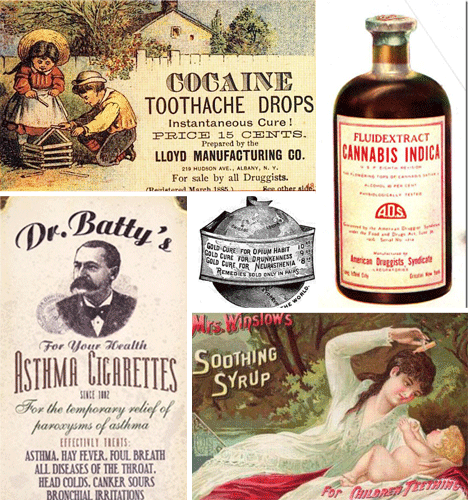
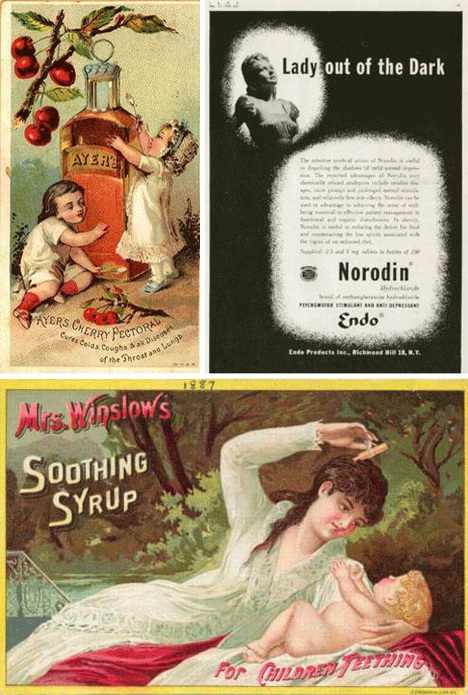
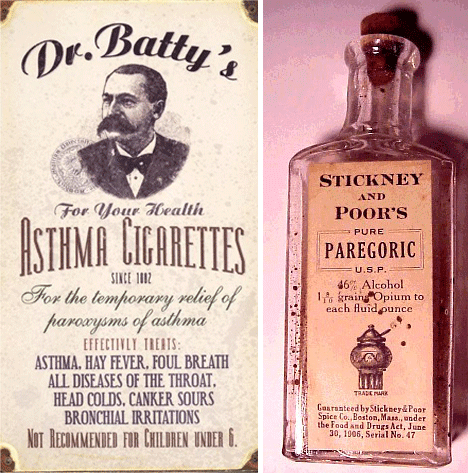
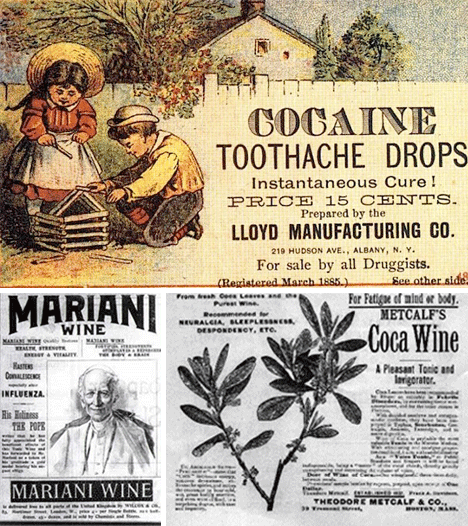
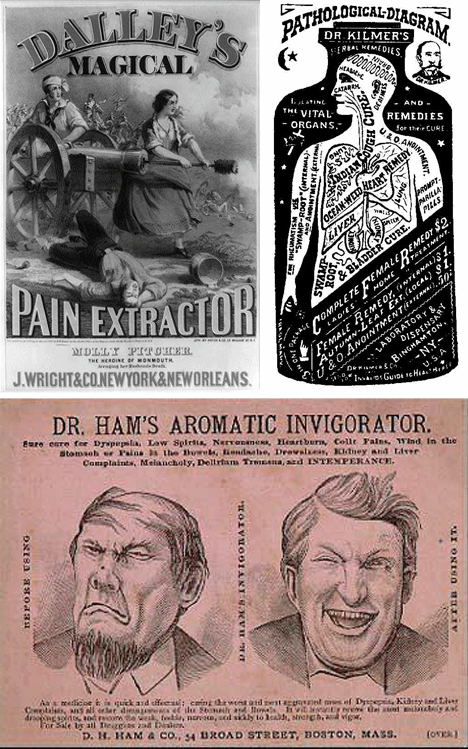
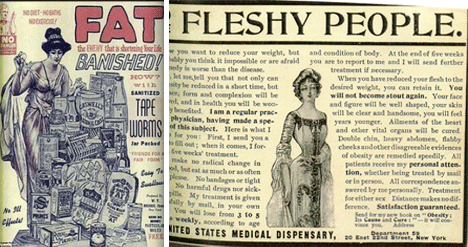

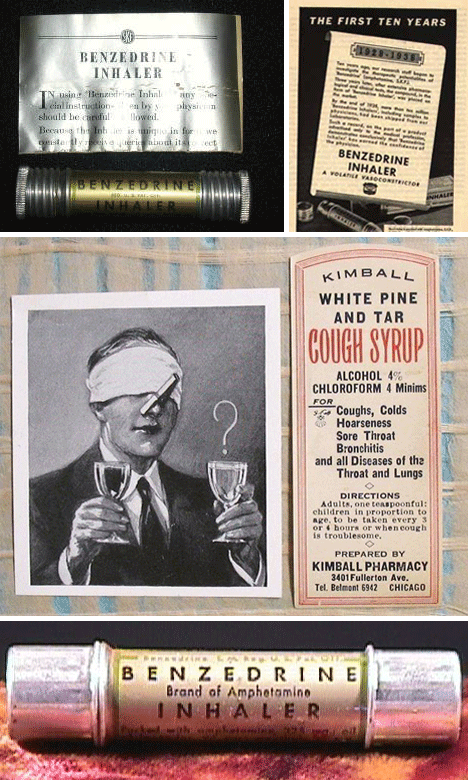

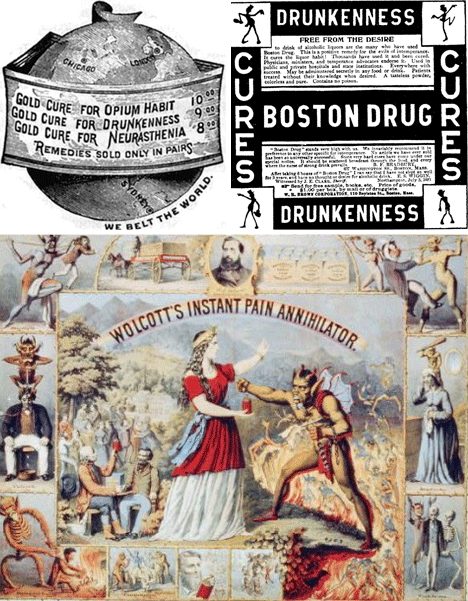










inShare